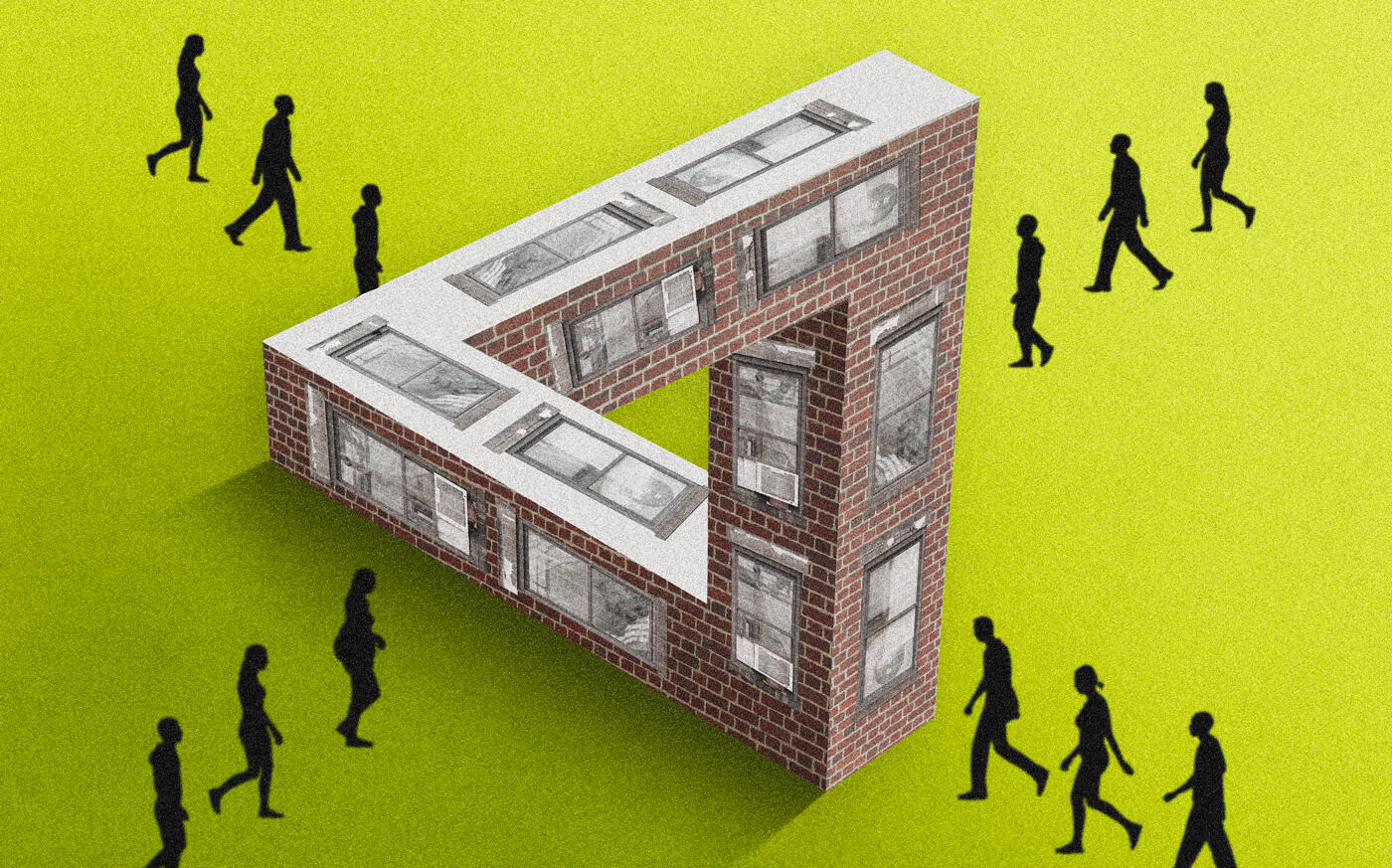
Rents slipping nationally, but Manhattan landlords won’t budge
No, really, New Yorkers came back: Unraveling Curbed’s rent conspiracy
Article theorized landlords faked demand to inflate rents

UPDATED Feb. 8, 10:52 a.m.
What if the staggering rent growth in New York City over the past two years was not from tenants returning en masse? What if landlords stowed units off-market to artificially inflate rents?
A Curbed story laid out that theory in late January, raising hackles across real estate Twitter.
Author Lane Brown argued that evidence does not show more people moved back than had left early in the pandemic, and that landlords have cause to keep units vacant.
The Real Deal dug into the claims. Here’s what we found.
Forgotten Demographics
To test the theory that New York’s resurgence never happened, Brown cited migration data, notably change-of-address forms filed with the United States Postal Service.
Brown found 209,500 more residents moved out of the city than into it during 2020, and the city never made up the difference but in fact continued to suffer losses. In 2022, the city lost nearly 98,000 residents, about the same as in 2019.
But this method misses international move-ins and folks who fail to submit a change-of-address form. It also doesn’t account for new household formation, as when roommates split up and get their own places.
The writer noted these factors but failed to inspect the effect they may have had. Even in a normal year, the city comptroller wrote in an October report, “postal data historically show a net outflow, even when New York City’s population is growing.”
When accounting for international movers, Brown only cites a Census estimate that the city gained 33,818 such residents in 2019. He surmised that New York gained “probably less in 2020 and 2021 owing to Covid-related travel bans.”
He failed to mention that travel bans ended in November 2021 for 33 countries, including parts of the European Union, the United Kingdom, China, Canada, Mexico, Brazil and India, and that New York brokers on the eve of the policy change reported their phones were ringing off the hook.
International movers were “historically a significant source of new residents for New York City prior to Covid-related travel bans,” the comptroller noted in a November 2021 report, adding that the lifting of international travel restrictions “may unleash a new wave of residents.”
College rush
Similarly, postal data misses demand from undergraduates, who rarely submit change-of-address forms.
Ahead of the fall 2021 semester, New York universities made a push for in-person instruction: Columbia in May, CUNY in July, NYU in August.
The pressure to return to campus drove “fierce competition” among apartment-hunting college students, the New York Post reported.
Lo and behold, that September is when Manhattan rents began to pop. Asking prices rose annually for the first time since the previous summer, according to data collected by appraiser Jonathan Miller for Douglas Elliman.
In October gains hit 11 percent. And In November, when travel bans lifted, rents were up 14 percent year-over-year. They haven’t been below double digits since.
Spring fever
Even before that, signs of spiking demand were evident, as renters saw a rare chance to grab bargains.
The median Manhattan rent dropped 15 percent in March 2021 and 22 percent in April from a year earlier, before Covid began pulling rents down.
Those deals sent leasing activity soaring — up 545 percent annually in April 2021. Miller had never seen higher growth or more leases signed since he began tracking the metrics in 2008.
Leasing volumes continued to break records through July.
Yet to Brown’s eye, New York in the spring of 2021 had little to offer prospective residents.
“New York was still besieged with Covid-related troubles,” he wrote. “Tourism was way down … Crime was reportedly surging … and outdoor dining had emboldened rats to live freely and openly among humans.”
“Had all of the people who had presumably moved to escape these very concerns really come flooding back?” he asked.
Well, yeah.
With vaccines’ debut, New Yorkers who had spent a year fearful and cooped up — perhaps with increasingly insufferable roommates, romantic partners or parents — were desperate for a reopened city and a return to culture. Despite the occasional rodent, outdoor dining was immensely popular.
Rents were still down, and some saw the deals as an opportunity to strike out on their own, creating new households unrecorded by postal forms.
Housing pressures
If low prices pulled record numbers of renters into the market, the city’s for-sale market likely pushed some would-be homeowners to remain tenants, further pressuring the supply of rentals.
Brown only briefly acknowledged that “maybe the Fed was discouraging home sales with higher interest rates, so more people were renting.” Actually, skyrocketing home prices and intense competition kept some would-be buyers in the rental market well before the Fed pushed mortgage rates up.
“In fact, 2021 could be described as a historical anomaly,” Miller said. “Demand for housing came roaring back.”
By the second quarter, Manhattan’s median home sale price hit $1.1 million, a two-year high. By the third, the number of Manhattan homes sold had topped a 14-year record by 15 percent. Prices were 8.8 percent above where they were two years before.
Why warehouse?
After trying to show that New York’s great return was imaginary, Brown turned to the supply side for answers as to why rents went through the roof.
He lands on warehousing: when landlords hold units off the market.
Brown noted that owners of rent-stabilized units have done so since the 2019 rent law passed, but that those vacancies are “only one factor in New York’s rent-affordability crisis.”
The 38,000 offline, rent-stabilized apartments comprise just 1.6 percent of the city’s rental units. “Mothballing these units probably isn’t what sent the price of market-rate Manhattan one-bedrooms spiraling toward infinity,” Brown wrote.
Instead, Brown surmised, owners are holding market-rate units off-market to push up prices because their loan agreements often require a minimum rent.
Attorneys in the field say those claims hold no water.
“The way it works is you have to charge a market rent or the rent set forth in any government regulation agreement,” said Eric Orenstein, a lawyer at Rosenberg & Estis who handles multifamily deals. There is no minimum rent owners must charge, he said.
During a period of record-low rents, such as the first year of Covid, the attorney said that it would have made sense to hold units off-market. And many landlords did.
But in the past year, when rents rose to record levels, holding apartments would be a losing game, Orenstein said. Many tenants had not paid rent in months, leaving landlords at risk of missing mortgage payments and eager for revenue.
Acknowledging the unlikelihood of his conspiracy theory, Brown set forth an alternative: RealPage. The firm’s software recommends landlords charge more than many would otherwise. One RealPage executive even credited the algorithm for nationwide rent increases.
The author admitted that only 1.8 percent of New York’s rental market uses the software, but floated the idea that those landlords could raise luxury rents enough to force some tenants down to lower-priced units, inflating their prices.
As with rent-stabilized vacancies, though, the numbers are too small to have set prices spiraling upward.
Ultimately, Brown appeared to acknowledge that he failed to prove his case. “Look, it’s possible that my suspicions are baseless,” he wrote, “and all of these buildings are full.”
Correction: A previous version of this story misstated the name of the author of the Curbed story.






